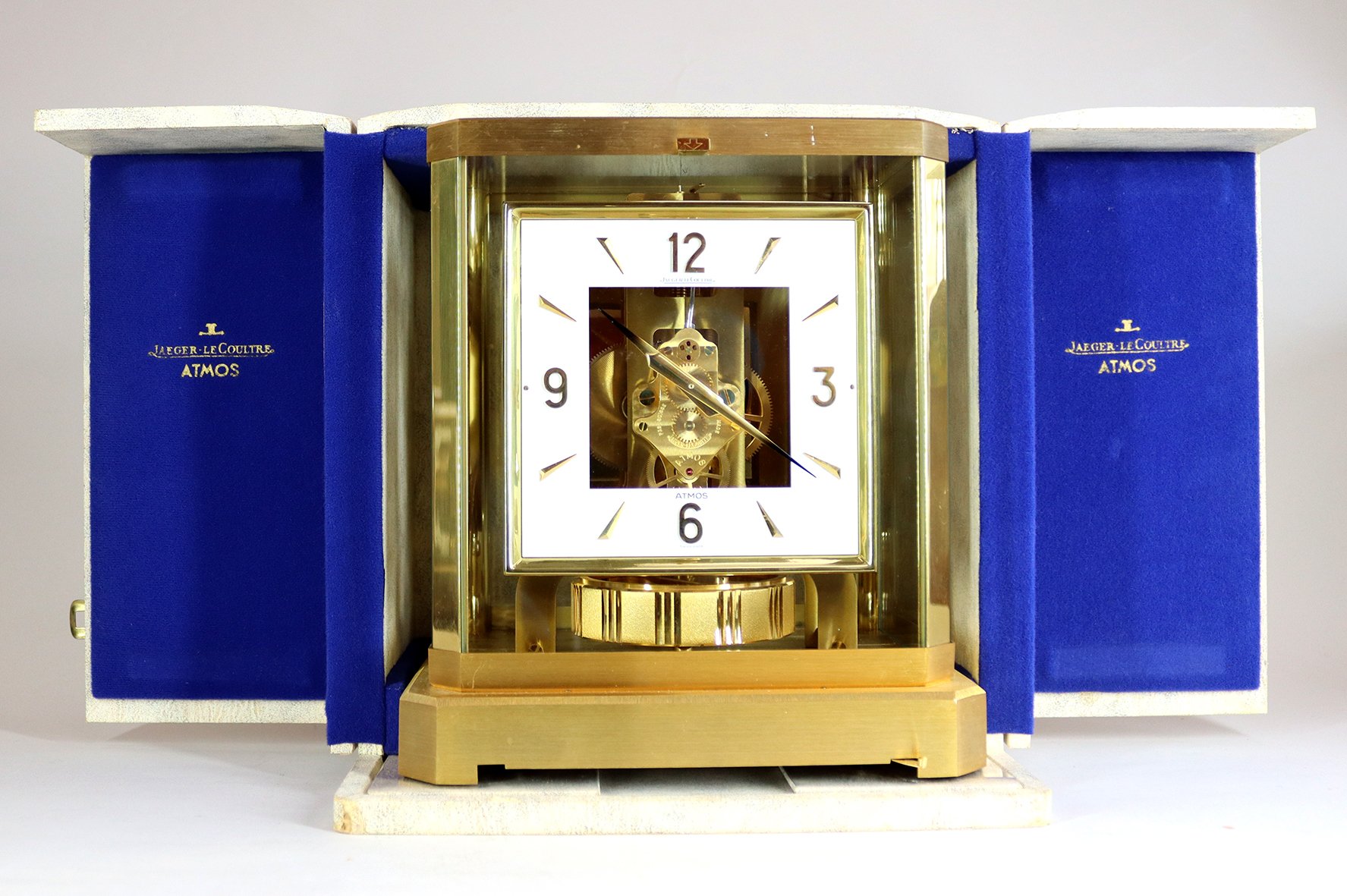 Image 1 of 7
Image 1 of 7

 Image 2 of 7
Image 2 of 7

 Image 3 of 7
Image 3 of 7

 Image 4 of 7
Image 4 of 7

 Image 5 of 7
Image 5 of 7

 Image 6 of 7
Image 6 of 7

 Image 7 of 7
Image 7 of 7








Jaeger LeCoultre Atmos Clock
A beautiful Atmos Clock By Jaeger LeCoultre numbered 321410, with a square dial with gilded Arabic numerals and battens and smoked tip hands. Unusually this clock retains the original presentation box, and sales materials.
This example dates from 1969 and the mechanism is housed in a gilt brass case with a brushed pedestal. The glass sides allow you to see the ingenious movement for all angles. These Atmos Clocks come in variety of designs, and this stylish example of Mid-Century design is one of our favourites.
The ‘Atmos’, first invented in 1928, has no external power source and never needs to be wound by hand. It isn’t powered by a suspended weight, as most pendulum clocks are. The Atmos clock gets its power from minute changes in atmospheric temperature, hence its name. Within a sealed capsule, a mixture of gases expand and contract with each temperature change. This is how the mechanism winds naturally without any human intervention.
23cm H x 21cm W x 15cm D
A beautiful Atmos Clock By Jaeger LeCoultre numbered 321410, with a square dial with gilded Arabic numerals and battens and smoked tip hands. Unusually this clock retains the original presentation box, and sales materials.
This example dates from 1969 and the mechanism is housed in a gilt brass case with a brushed pedestal. The glass sides allow you to see the ingenious movement for all angles. These Atmos Clocks come in variety of designs, and this stylish example of Mid-Century design is one of our favourites.
The ‘Atmos’, first invented in 1928, has no external power source and never needs to be wound by hand. It isn’t powered by a suspended weight, as most pendulum clocks are. The Atmos clock gets its power from minute changes in atmospheric temperature, hence its name. Within a sealed capsule, a mixture of gases expand and contract with each temperature change. This is how the mechanism winds naturally without any human intervention.
23cm H x 21cm W x 15cm D
